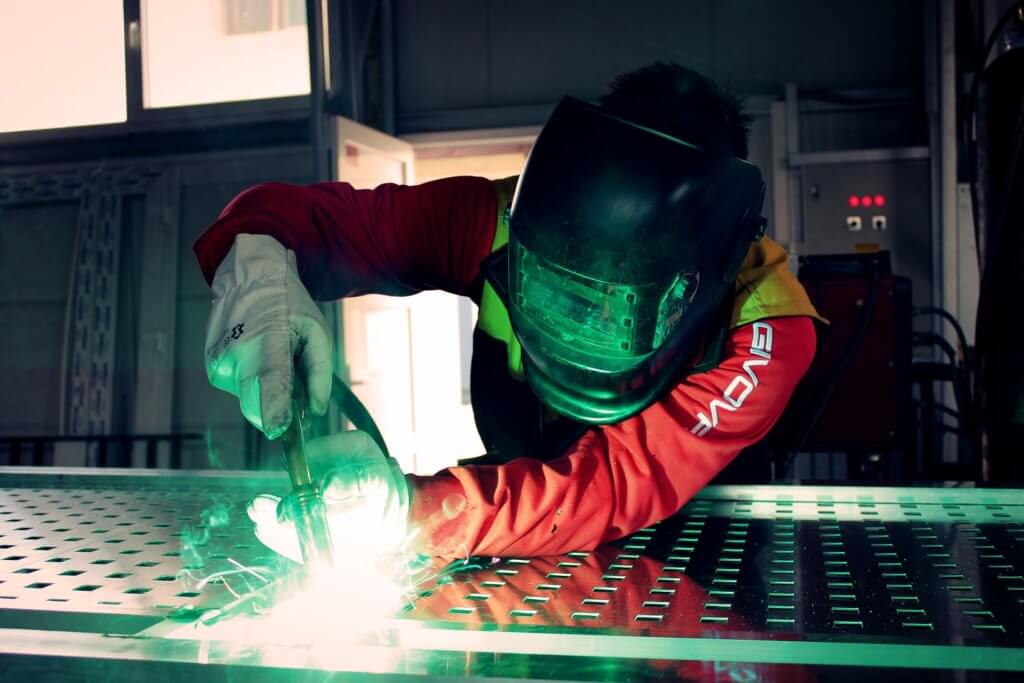
Even the smallest changes in manufacturing costs can make a major difference in the operation. You might be saving a small amount per unit with new improvements, but when you look at that on a scale of millions of units, it adds up fast. Innovative technology can control your expenses through multiple approaches, from decreasing capital expenses to lowering your production costs directly.
Cloud-based Solutions
Cloud-based solutions drastically reduce upfront costs when it comes to your IT infrastructure. Whether you rely it on for software such as enterprise resource planning systems or put it in place for development platforms or other infrastructure, you eliminate a significant portion of the equipment and maintenance costs.
Another benefit to bringing cloud-based solutions into your manufacturing business comes from their ability to easily scale up as needed. If you have unexpectedly high demand when you’re not prepared for it, you don’t have to scramble to roll out additional equipment on-premises. Instead, you work with the cloud service provider to give you greater capacity.
You can integrate many cloud solutions through built-in third-party integration or Application Programming Interfaces that make it possible to share data with internal or external partners. Since blind spots in the manufacturing process can lead to lower productivity, keeping your software connected with everyone in the supply chain can address this issue.
The cloud-based solution doesn’t require deployment onto individual workstations or equipment. Instead, internet-connected devices can log in to the services as needed. Upgrades happen as the provider pushes them out, rather than your organization needing to encounter lengthy downtime for a deployment.
Industrial Internet of Things
The Industrial Internet of Things continues to find ways to make many areas of manufacturing more efficient. The sheer amount of smart devices that are currently available and predicted to be in the near future are in the millions. One use case that’s particularly helpful for manufacturers is the ability to get connected sensors nearly everywhere.
You can measure more data than you previously had access to, whether it comes from your current equipment or areas that are logistically difficult to track. The connected devices also give you greater visibility into your operations and the areas that are not as efficient as they should be.
This part of the technology market is still maturing and leverages the cloud and emerging technology heavily. Companies that start incorporating the industrial IoT into their operations can be ahead of the curve. In addition to making your manufacturing processes more efficient, they can also work to improve safety measures. Smart helmets can help workers avoid potential hazards and help them follow the correct procedures every time they’re on the manufacturing floor.
If a piece of equipment breaks, the information on replacing or repairing the parts can immediately appear and guide the employee through the process. These devices are also useful for offering standardized training in a hands-on job, as augmented reality and virtual reality technology can put the person digitally in the shoes of someone who knows the work inside and out.
Centralizing Manufacturing Data
You have the potential to gather drastically more data through IoT devices, but it won’t do you a lot of good if it’s separated in multiple silos throughout the organization. In manufacturing, you can easily end up with data divided between the production floor and the office. No one has the full picture, so it’s difficult or impossible to understand areas that need optimization.
By using new technology to centralize your data, everyone is working from the same set of information. You don’t run into situations where you’re using week-old data on the production floor and have to redo the day’s work because everything manufactured in that run was incorrect.
Centralized data also makes it possible to use business intelligence solutions to analyze key performance areas and provide actionable insights on ways to improve. Some solutions use machine learning and artificial intelligence to make predictions based on this information. You can use predictive analytics to catch warning signs of equipment that needs maintenance or is about to fail, market trends that could impact demand, and other vital insights.
Process Automation
Artificial intelligence and modern manufacturing solutions also give you the opportunity to look at your current processes and automate those that are repetitive and time-consuming.
They augment your human workforce by freeing up their time for parts of the job that rely on judgment calls. For example, identifying troubling trends or patterns that lead to higher manufacturing costs or reaching out to new partners for exciting opportunities.
One area that’s particularly helpful to automate is compliance. Whether you have internal compliance measures or you’re following industry regulations, automating these measures help you ensure that everyone is keeping up with the requirements. When something changes in the law, you can update these automated processes so you don’t need to retain the entire workforce.
Modern technology introduces a variety of cost-cutting measures for manufacturers. When you go through a digital transformation and embrace the possibilities that they bring, you reduce your expenses while increasing everything that your company has to offer. A managed IT services provider can give you the guidance you need to take your manufacturing operation to the next level.
Are you looking for a Green Bay based MSP to help you improve operations and security? Contact us to learn more about NetAssist and how we can streamline your processes. Get a free assessment today!
